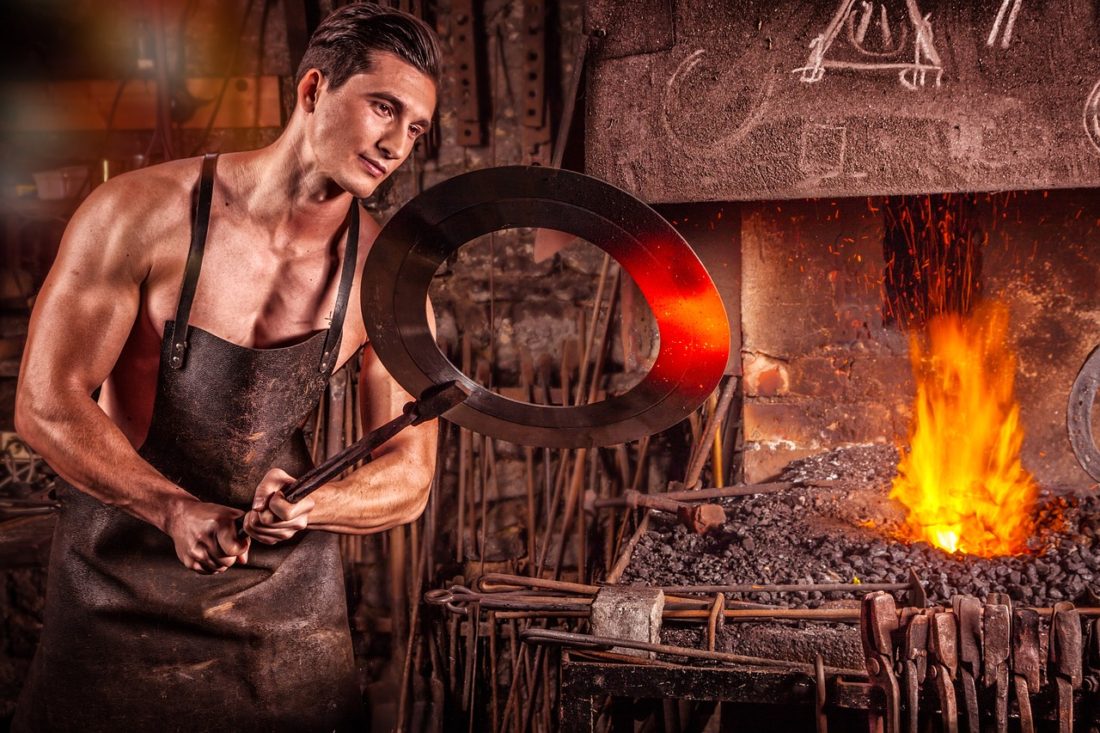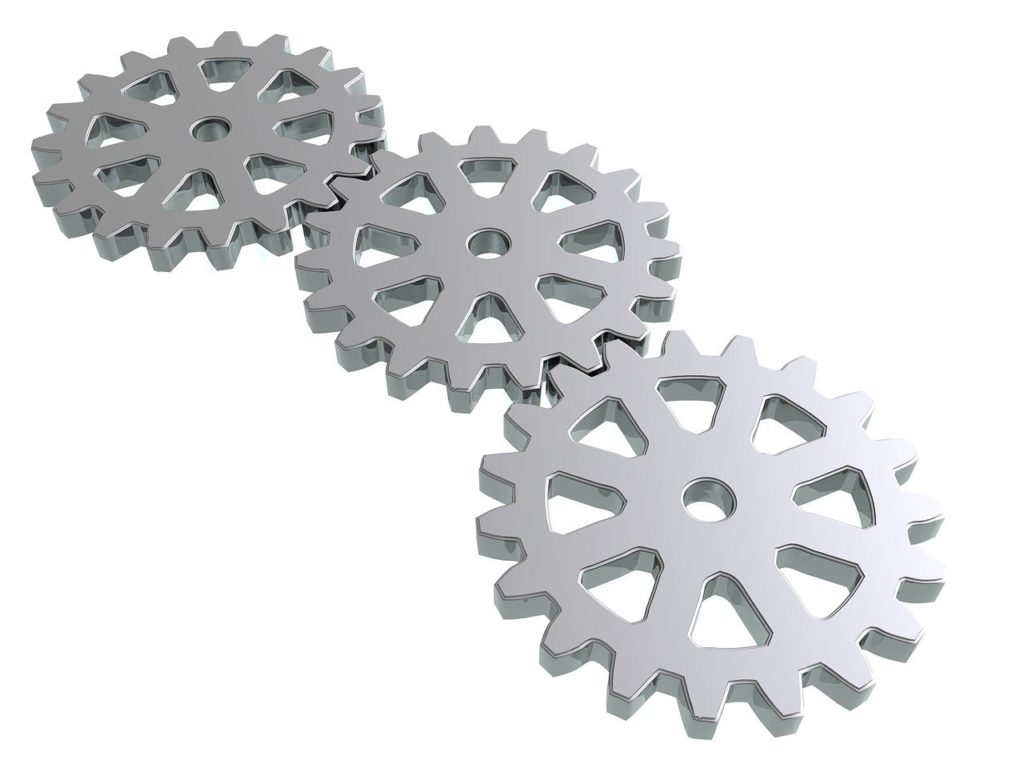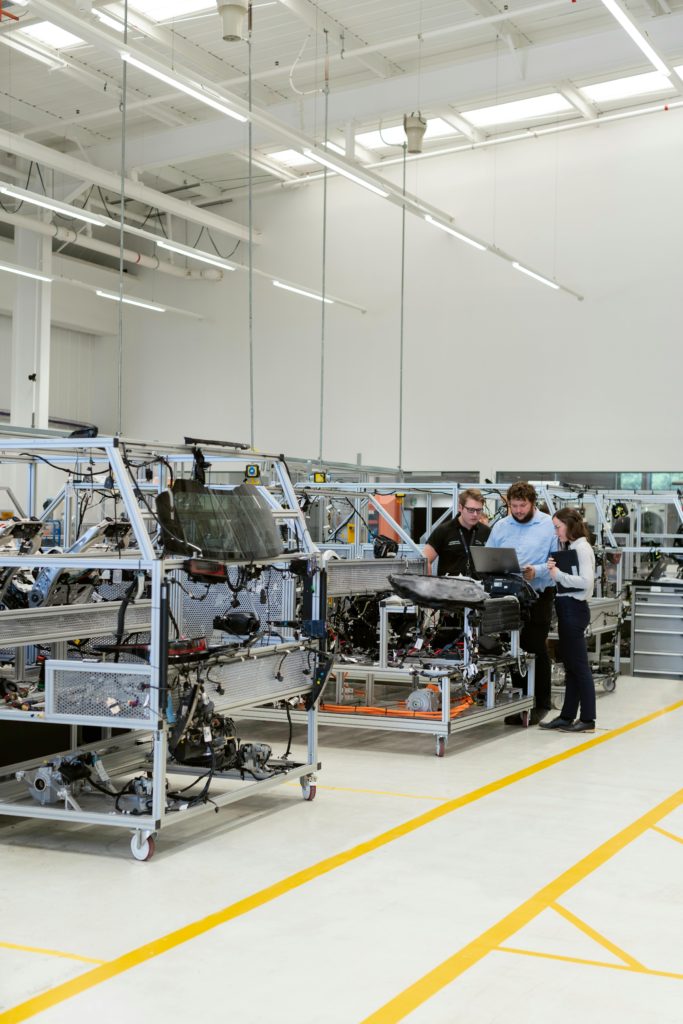In the realm of manufacturing, the production of machine parts demands precision, durability, and reliability. Among the various manufacturing methods available, hot forging stands out as a process that consistently delivers these qualities. From automotive to aerospace, Forestry, Agriculture to motor vehicle industries, hot forged machine parts play a crucial role in ensuring the smooth operation of various mechanical systems.
Note that the hot forging technology is fast advancing, which is enabling forging manufacturers to perform mass production as well as forging more intricate shapes. The size of the hot forged machine parts does not really matter with today’s technology.
So, for novice forging enthusiasts, how does the hot forging process work? What are the industries using hot forged products? What are the major advantages of using hot forged machine parts? These are some of the things that this guide will shed light on, plus buyers’ selection tips. But first,
What Is Hot Forging?
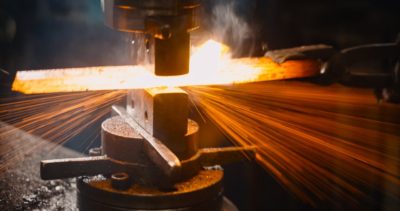
Hot forging is a manufacturing process that involves shaping metal using compressive forces. The forging material is heated above its recrystallization temperature. During hot forging, a metal billet heats to a temperature where it becomes malleable. This allows for easy using dies and presses or hammers. The application of high-pressure forces the heated metal into the desired shape. That’s basically how the forging process works and produces parts with superior mechanical properties and dimensional accuracy.
One of the key advantages of hot forging is the ability to produce parts with enhanced strength and toughness. This is in comparison to other forming or manufacturing methods. The elevated temperature during forging reduces the material’s resistance to deformation, making it easier to achieve complex shapes and intricate designs. Additionally, hot forging eliminates internal defects such as porosity and inclusions, resulting in parts with improved structural integrity and reliability.
Commonly forged materials include carbon steel, alloy steel, stainless steel, and non-ferrous metals like aluminum and copper. Hot forging is widely used in industries such as automotive, aerospace, manufacturing, and construction industries, among others. It is ideal for producing a variety of components, including shafts, gears, connecting rods, and crankshafts.
Types Of Hot Forging Processes
There are several types of hot forging techniques, and all depend on the machine parts being manufactured. Here are 3 of the most common hot forging processes:
Open-Die Forging:
Open-die forging involves shaping metal between flat dies through repeated hammering or pressing. This process allows for the production of large, complex parts with minimal material wastage. It offers flexibility in shaping various geometries and is suitable for custom or one-off productions. Open-die forging is commonly used for manufacturing components such as shafts, blocks, discs, and rings. These parts find massive applications in the aerospace, automotive, and heavy machinery industries.
Closed-Die Forging:
Closed-die forging, also known as impression-die forging, shapes metal within a set of dies with specific cavity shapes. It produces parts with precise dimensions and tight tolerances, making it suitable for high-volume production. Closed-die forging offers excellent material utilization and can achieve complex shapes with consistent mechanical properties. It is widely used for manufacturing components like gears, connecting rods, and crankshafts in automotive and aerospace applications.
Press Forging:
Press forging utilizes hydraulic or mechanical presses to apply gradual, steady pressure to the metal, resulting in controlled deformation and uniform part density. This process is ideal for producing parts with intricate details and fine surface finishes. Press forging offers high accuracy and repeatability, making it suitable for mass production of components such as valves, fittings, and flanges for various industrial sectors.
Advantages Of Hot Forged Machine Parts
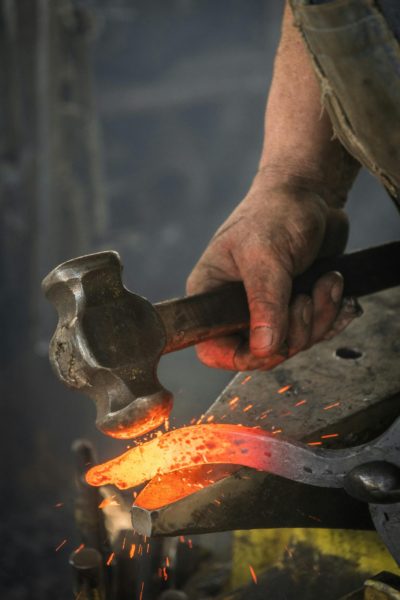
Hot forging is a highly advantageous manufacturing process that offers numerous benefits over other production methods. Below are the key advantages of hot forged machine parts, highlighting the reasons why this process is widely preferred across various industries:
Superior Strength and Toughness:
Hot forged machine parts exhibit exceptional strength and toughness compared to parts produced by other manufacturing techniques. The controlled deformation of metal at elevated temperatures results in a refined grain structure, enhancing the mechanical properties of the final product. This increased strength makes hot forged parts ideal for applications subjected to high loads, vibrations, and impact forces, such as automotive components, industrial machinery, and power transmission systems.
Enhanced Structural Integrity:
Hot forging eliminates internal defects such as porosity and inclusions, which are commonly found in cast or machined parts. By subjecting the metal to high compressive forces in a controlled environment, hot forging ensures the uniform distribution of material and the absence of voids or weak spots within the part. As a result, hot forged machine parts exhibit superior structural integrity, minimizing the risk of premature failure and enhancing reliability in critical applications.
Improved Fatigue Resistance:
The refined grain structure and absence of internal defects in hot forged machine parts contribute to their enhanced fatigue resistance. These parts can withstand cyclic loading and repeated stress without experiencing significant deterioration in performance or mechanical properties. Hot forging produces components with consistent material properties throughout, reducing the likelihood of fatigue-related failures and extending the service life of machinery and equipment in demanding operating conditions.
Precision and Dimensional Accuracy:
Hot forging allows for the production of parts with tight dimensional tolerances and precise geometries, ensuring compatibility and interchangeability in assembly and operation. The use of custom-designed dies and tooling enables manufacturers to achieve the desired shape, size, and surface finish with high accuracy and repeatability. This level of precision is essential for components that require close mating fits, such as bearings, gears, and valve assemblies, where even minor deviations can lead to performance issues or system failure.
Cost Efficiency and Material Savings:
Despite the initial investment in tooling and equipment, hot forging offers significant cost savings over the long term, especially for high-volume production runs. The process minimizes material wastage by utilizing the raw material more efficiently than the machining or casting methods. Additionally, hot forging reduces the need for secondary operations such as machining or welding, streamlining the manufacturing process and lowering overall production costs. These cost efficiencies make hot forged machine parts a cost-effective solution for industries seeking to optimize their manufacturing processes and maximize profitability.
Design Flexibility and Customization:
Hot forging provides designers with greater flexibility in material selection, part geometry, and customization options compared to other manufacturing techniques. The process allows for the production of complex shapes, intricate features, and tailored designs that meet specific performance requirements and functional needs. Manufacturers can optimize part designs to minimize weight, improve functionality, and enhance overall efficiency, resulting in innovative solutions for various applications across diverse industries.
Industries Massively Adopting Hot Forged Parts
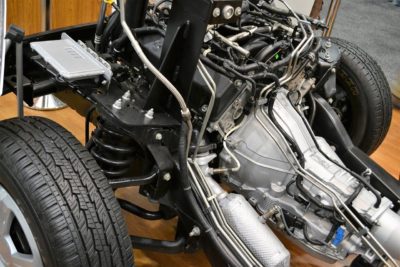
Hot forged parts find widespread application across various industries due to their superior strength, durability, and reliability. Some of the key industries that extensively utilize hot forged components include:
Automotive Industry:
Hot forged parts are integral to the automotive sector, where they are used in engine components, drivetrain systems, chassis assemblies, steering and suspension components, and transmission parts. Examples include crankshafts, connecting rods, gears, axles, and wheel hubs. These components require high strength, wear resistance, and dimensional accuracy to withstand the demanding operating conditions in vehicles.
Aerospace and Defense:
The aerospace and defense industries rely on hot forged parts for critical applications that demand lightweight yet robust components with precise tolerances. Aerospace components such as landing gear parts, aircraft engine components, structural fittings, and fasteners are often produced through hot forging processes. Defense applications include components for military vehicles, aircraft, missiles, and weapons systems.
Oil and Gas Sector:
In the oil and gas industry, hot forged parts are used in drilling equipment, wellhead components, valves, fittings, and pipelines. These components are subjected to high pressure, corrosive environments, and extreme temperatures, necessitating the use of materials with superior mechanical properties and resistance to wear, fatigue, and corrosion.
Heavy Machinery and Equipment:
Hot forged parts play a crucial role in heavy machinery and equipment used in construction, mining, agriculture, and forestry. Components such as shafts, gears, hydraulic cylinders, pistons, and crankshafts require high strength, toughness, and resistance to abrasion and impact to withstand heavy loads and harsh working conditions.
Power Generation:
Hot forged parts are common in power generation equipment such as turbines, generators, and steam boilers. Components like turbine blades, rotor shafts, and generator shafts require superior mechanical properties to withstand high temperatures, rotational forces, and cyclic loading encountered in power generation systems.
Rail Transportation:
The rail transportation industry relies on hot forged parts for manufacturing railcar components, locomotive parts, track fittings, and signaling equipment. These components must endure high levels of stress, vibration, and impact while maintaining dimensional stability and reliability over extended service life.
Marine and Shipbuilding:
In marine and shipbuilding applications, hot forged parts are used in propulsion systems, marine engines, ship structures, anchor systems, and mooring equipment. Marine components must withstand corrosive seawater environments, dynamic loading, and harsh weather conditions, making hot forged parts ideal for maritime applications.
Industrial Machinery and Equipment:
Various industrial machinery and equipment, including hydraulic systems, material handling equipment, industrial presses, and manufacturing machinery, utilize hot forged components. These components contribute to the efficient operation of industrial processes and manufacturing operations across diverse sectors.
Buyer’s Selection Guide for Hot Forged Machine Parts
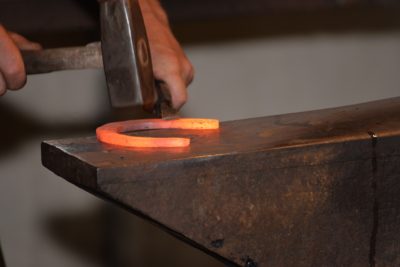
Procuring hot forged machine parts necessitates a comprehensive approach to ensure optimal performance, reliability, and cost-effectiveness. Buyers must consider various factors throughout the procurement process to make well-informed decisions. Here’s an expanded selection guide to assist buyers in navigating the complexities of selecting hot forged machine parts:
Material Selection:
A critical aspect of selecting hot forged machine parts is material choice. Buyers must meticulously evaluate the application’s mechanical requirements, corrosion resistance, and temperature constraints to determine the most suitable material. Options range from standard carbon steel for typical applications to specialized alloys like stainless steel, titanium, and aluminum for extreme environments. Collaborating with materials engineers or specialists may aid in making informed decisions regarding material selection.
Quality Standards:
Adherence to stringent quality standards is paramount in ensuring the reliability and performance of hot forged machine parts. Buyers should verify that potential suppliers comply with industry benchmarks such as ASTM, AISI, DIN, or ISO to guarantee consistent quality and performance. Certifications such as ISO 9001 or AS9100 indicate robust quality management systems and adherence to rigorous manufacturing protocols, offering additional assurance of product quality.
Manufacturing Process:
Understanding the intricacies of various hot forging techniques is essential for selecting the most appropriate manufacturing process. Buyers should assess potential suppliers’ proficiency in diverse hot forging methods, including open-die, closed-die, press, and roll forging. This evaluation ensures alignment with the part’s complexity, size, and performance specifications, thereby optimizing manufacturing efficiency and product quality.
Customization Options:
Flexibility in customization is crucial for meeting unique application requirements effectively. Buyers should confirm the supplier’s capability to tailor designs, material compositions, and finishing options to suit specific needs. Discussing provisions for prototyping and small-batch production allows for accommodating specialized demands while ensuring compatibility and performance.
Supplier Reliability:
Establishing trust and confidence in the supplier’s capabilities is essential for a successful procurement process. Buyers should conduct thorough due diligence on potential suppliers, considering factors such as industry tenure, reputation, and client testimonials. A reliable supplier demonstrates consistency, responsiveness, and a commitment to delivering high-quality forged components within agreed timelines.
Cost Considerations:
While cost is a crucial consideration, buyers must balance affordability with quality and performance. Conducting a comprehensive cost-benefit analysis helps evaluate the overall value proposition, considering material expenses, ancillary services like machining and finishing, and long-term maintenance costs. Collaborating with procurement specialists or cost analysts may aid in identifying opportunities for cost optimization without compromising quality.
Lead Times and Delivery Logistics:
Timely delivery of hot forged machine parts is vital to avoid disruptions in production schedules. Buyers should collaborate closely with suppliers to establish clear communication channels regarding lead times, production schedules, and shipping logistics. Addressing potential logistical challenges upfront minimizes the risk of delays and ensures punctual delivery of forged components.
Technical Support and After-Sales Service:
Access to robust technical support and after-sales service is invaluable throughout the procurement process and beyond. Buyers should prioritize suppliers offering comprehensive technical assistance, engineering expertise, and responsive after-sales support. This ensures prompt resolution of any queries or concerns during procurement and ongoing assistance throughout the lifecycle of the forged parts, enhancing overall customer satisfaction and product longevity.
Conclusion
Hot forged machine parts play a pivotal role in various industries, offering unparalleled strength, durability, and reliability. Understanding the different types, advantages, and factors to consider when selecting hot forged parts is essential for ensuring optimal performance and efficiency in mechanical systems. By adhering to the guidelines outlined in this article, buyers can make informed decisions and procure high-quality hot forged machine parts that meet their specific requirements.
